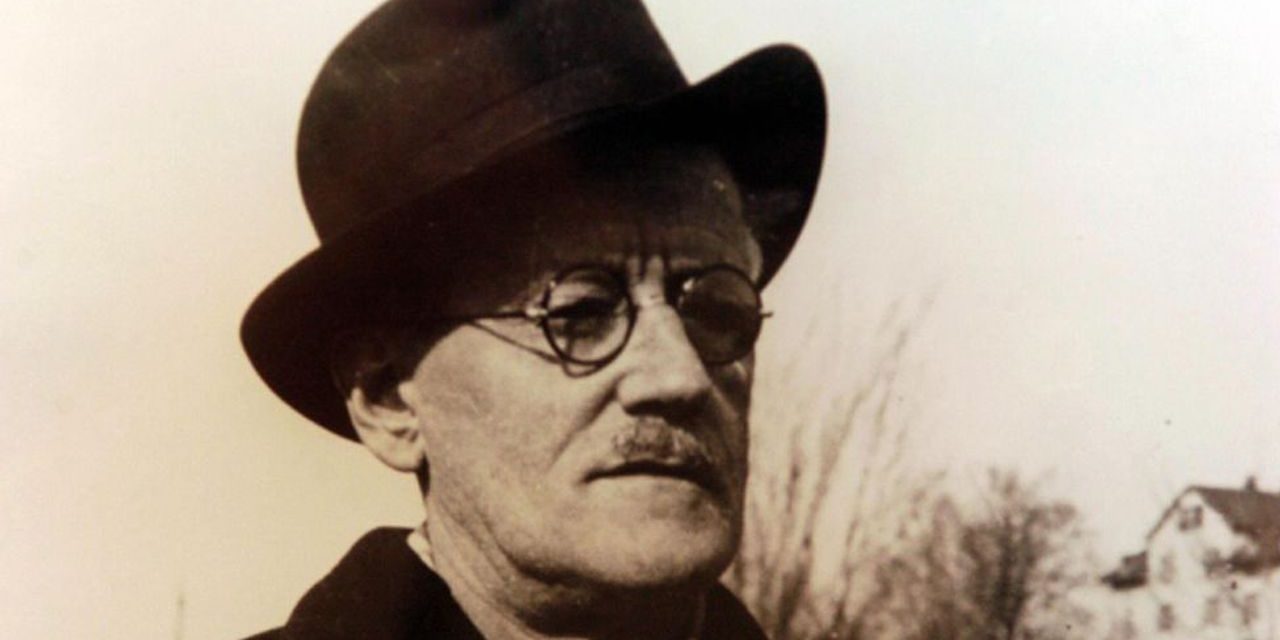Step into the mesmerizing world of literature where words dance to the tune of a visionary writer – James Joyce, Joyciano. Known for his groundbreaking method to language and storytelling, Joyce’s legacy transcends time, leaving an indelible mark on the literary panorama. Join us as we get to the bottom of the enigmatic genius behind one of the most influential writers in modernist literature!
Literary Ambitions and Influences:
James Joyce, born on February 2, 1882, in Dublin, Ireland, and passing away on January 13, 1941, in Zürich, Switzerland, became a celebrated Irish novelist famed for his innovative use of language and groundbreaking exploration of recent literary techniques. Let’s delve into the fascinating info about his lifestyle and the enduring legacy of his literary masterpieces.
Joyce became the eldest of 10 kids in his own family who survived infancy. He spent his childhood in Dublin, where he attended Clongowes Wood College and later Belvedere College. Despite facing monetary hardships due to his father’s erratic behavior, Joyce excelled academically and displayed early literacy skills.
During his years at University College Dublin, Joyce immersed himself in extracurricular sports with extensive analysis and participation in literary societies. He drew inspiration from European literature, especially admiring Henrik Ibsen, which fueled his ambition to become a writer.
The evolution of Joyce’s writing and experimentation with language
James Joyce’s journey as a writer was one of constant evolution. His early works like “Dubliners” already hinted at his innovative approach to language, but it was in his later novels that he truly pushed the boundaries of literary experimentation.
With every new work, Joyce challenged conventional storytelling strategies and delved deeper into the geographical regions of linguistic creativity. He sought to capture the intricacies of human ideas through his writing, pushing the bounds of what language should be specific.
Joyce’s exploration of language became not merely approximately words on a page but a quest to discover new approaches to representing the complexities of human experience. His willingness to defy conventional narrative systems paved the way for future generations of writers to interrupt loose from literary constraints.
As Joyce persevered to refine his particular fashion, he solidified his location as a trailblazer in modernist literature, inspiring endless others to push the bounds of creative expression.
Exploring the use of interior monologue in Ulysses
In 1922, Joyce achieved unprecedented fulfillment with the book of his magnum opus, “Ulysses.” Set in Dublin on a single day, the radical parallels Homer’s Odyssey and employs revolutionary narrative strategies, which include move-of-focus to provide profound insights into the human psyche. Despite facing censorship challenges, “Ulysses” earned enormous popularity as a literary masterpiece.
In Ulysses, Joyciano delves deep into the minds of his characters via indoor monologue. This approach lets readers experience the raw thoughts and emotions of the characters in actual time.
Through indoor monologue, Joyce breaks away from traditional narrative structures and immerses us in a circulation of attention that mirrors how our personal minds paint – fragmented, chaotic, and full of surprises.
Each person’s internal communication well-knownshows their fears, dreams, insecurities, and hopes with unfiltered honesty. Leopold Bloom’s introspections give us a glimpse into the complexities of human nature as he navigates via Dublin on June 16.
The use of indoor monologue in Ulysses provides intensity to the characters and enhances our information about their actions and motivations. It transforms analyzing into a deeply non-public experience wherein we come to be intimately linked with each character’s internal international.
The complex network of symbolic parallels in Finnegans Wake
Joyce’s final work, “Finnegans Wake,” posted in 1939, represents the end result of his experimental literary imagination and prescient. Characterized by its complicated multilingual fashion and complex narrative shape, the unconventional delves into typical themes of human existence, even pushing the bounds of linguistic expression.
In “Finnegans Wake,” James Joyce weaves a web of symbolic parallels that intertwine throughout the narrative, growing a tapestry of that meaning beyond the floor. The novel is sort of a puzzle in which every piece contributes to the bigger picture, inviting readers to delve deeper into its problematic layout.
Joyce’s use of symbolism in “Finnegans Wake” transcends conventional storytelling, with layers upon layers waiting to be uncovered. From mythical references to ancient allusions, each image serves a cause in enriching the textual content’s complexity.
Navigating through the complicated community of symbolic parallels in “Finnegans Wake” is comparable to embarking on a highbrow journey wherein connections reveal themselves gradually. It’s now not only interpreting symbols but also knowing their interplay and importance inside Joyce’s enigmatic masterpiece.
The splendor of exploring these symbolic parallels lies in understanding that there are not any definitive answers—only interpretations that open up new avenues for exploration and contemplation. Joyce challenges readers to embody ambiguity and interact with his paintings on a level past traditional storytelling conventions.
Analysis of Joyciano’s use of invented words, puns, and allusions
James Joyce, the master of linguistic innovation and literary experimentation, delved deep into the realm of making new words, weaving puns, and crafting intricate allusions in the course of his works.
In his novels like Ulysses and Finnegans Wake, Joyce’s use of invented vocabulary adds layers of complexity to his narratives. These neologisms are not just random lexical creations; they function as equipment to express precise ideas or emotions that couldn’t be captured by existing language.
Joyce’s penchant for puns injects humor and ambiguity into his writing, tough readers to dissect a couple of meanings layered inside an unmarried phrase. His subtle wordplay invites interpretation on diverse levels, enriching the reading experience with hidden connections and smart wit.
Furthermore, Joyce’s skillful incorporation of allusions to history, mythology, literature, and more gives a treasure trove for the ones willing to delve deeper into the intricacies of his texts.
By immersing himself in this web of linguistic playfulness and intertextuality, James Joyce crafted a wealthy tapestry that continues to fascinate readers and students alike with its depth and complexity.
The impact of Joyciano’s writing on literature and modernist movements
James Joyce’s literary legacy remains remarkable, along with his works persevering to captivate readers and international pupils. His meticulous interest in language, deep psychological perception, and formidable narrative experimentation have placed him as a relevant parent inside the modernist literary motion. From “Dubliners” to “Finnegans Wake,” Joyce’s writings are timeless classics, supplying profound reflections on the human condition.
James Joyce’s writing has left an indelible mark on literature and modernist movements. His modern use of language and experimental strategies challenged conventional storytelling conventions, inspiring a brand new generation of writers to push obstacles.
Joyce’s difficult narratives and complex characters opened up possibilities for exploring the depths of human awareness in methods previously unseen in literature. His impact can be visible in the works of later modernist authors who sought to emulate his daring approach to shape and shape.
By breaking unfastened from conventional norms, Joyce paved the way for a greater expansive expertise of what literature may want to reap. His effect on literary concepts and exercise continues to resonate with modern-day writers who strive to seize the essence of human experience through creative storytelling methods.
Innovative, groundbreaking, and visionary, James Joyce stays a towering figure whose legacy reverberates in the course of the literary world today.
Conclusion:
James Joyce’s legacy as a writer continues to influence current writers across the globe. His formidable experimentation with language, interior monologue, symbolic parallels, and creative use of words has left an indelible mark on modern literature. Writers today hold to draw proposals from Joyce’s revolutionary techniques and his capability to push the bounds of conventional storytelling.
Joyce’s impact on the modernist movement and past can’t be overstated. His works have paved the manner for destiny for generations of writers to explore new avenues of expression and project traditional literary norms. The tricky tapestry of language that Joyce weaved in his novels like Ulysses and Finnegans Wake is a testimony to his unheard-of genius.
James Joyce’s lifestyles and works epitomize the boundless possibilities of artistic expression. Through his innovative use of language and fearless exploration of the latest literary paperwork, Joyce transcended traditional limitations to create enduring masterpieces that resonate with readers throughout generations. As we mirror his outstanding contributions to literature, James Joyce’s legacy shines brightly as a beacon of creative brilliance and literary innovation.





